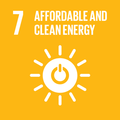Lontra’s Blade Compressor has completely redesigned a way to compress air – a process that is responsible for one tenth of the electricity demand within the industrial and manufacturing sectors.
Air compressors are ubiquitous within industry, and are commonly referred to as the ‘fourth utility’ because their applications are so diverse. Lontra’s new method for compressing air replaces the ‘up-and-down’ piston technology that previously compressed air, with a rotary mechanism that reduces the energy required for compression, removes the need for oil lubrication, and creates a more reliable compressor, according to the company.
Lontra has collaborated with water management company ‘Severn Trent Water’ in the UK to test the blade compressor against previous compression technology used to aerate wastewater during the treatment process. Severn Trent Water estimate they spent around £9 million on electricity to run their fleet of 300 air compressors or ‘blowers’ as they are known in the industry. The results from the trial suggested that the Blade Compressor could save more than £1.8 million per year and cut CO2 emissions across the business by 3%.
Why you should care
Air compression technology is responsible for over 10% of electricity consumed in industry. It can also be an inefficient technology, since only 10% of the total energy supplied to a compressor is typically converted to usable energy at the point of use. The ‘Blade Compressor’ has been shown to require less than 20% energy than traditional compressors, helping industry to reduce their carbon footprint.
How the Global Goals are addressed

Affordable and clean energy
Lontra’s technology demonstrates a 20% reduction in energy consumption, helping to make industry more efficient.

Industry, innovation and infrastructure
Lontra’s Blade Compressor demonstrated a cross business reduction of CO2 emissions of 3% by retrofitting infrastructure with their technology.


